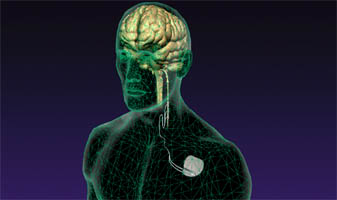Electrode placement affects subthalamic nucleus stimulation outcomes
Published on April 4, 2014 at 5:15 PM · No CommentsBy Eleanor McDermid, Senior medwireNews Reporter
Researchers have identified factors associated with motor, cognitive and mood outcomes after deep-brain stimulation (DBS) of the subthalamic nucleus (STN) in a large cohort of patients with Parkinson’s disease (PD).
The findings confirm that stimulation of the STN, rather than surrounding structures, has the greatest success. Among the 262 patients, 26 had bilateral placement of stimulation contacts in the zona incerta, 17 in the posterior-sensorimotor-STN and 61 in the intermediate- associative-STN.
When assessed 1 year after surgery, patients with bilateral stimulation of the posterior-sensorimotor-STN or intermediate-associative-STN had similar motor outcomes, but those with placement in the zona incerta had significantly higher (worse) scores for motor disability, akinesia, rigidity and axial signs. Within the STN, greater motor improvements occurred with more anterior electrode placement.
Electrode placement also influenced cognitive outcomes, report study author Marie-Laure Welter (Université Pierre et Marie Curie-Paris 6, France) and colleagues. In all, 18% of patients experienced a decline in cognitive performance between baseline and 1 year after surgery and, again, more anterior electrode placement was associated with better outcomes.
However, the researchers believe that stimulation per se is not likely to affect cognitive outcomes. The patients with cognitive decline after surgery had no further decline between 1 and 2 years postsurgery, which “suggests that the main factor related to its occurrence is the surgical procedure creating a microlesion.”
Some psychiatric outcomes were also linked to electrode placement, with contacts in the 19 patients who developed transient hypomania tending to be placed deeper than in those without, and being associated with placement in the STN rather than the zona incerta. By contrast, continuing or new depression was associated only with patients’ cognitive performance.
“This confirms the role of the STN in motor and nonmotor processing and its possible importance in nonmotor diseases”, writes the team in Neurology.
Finally, the researchers stress the “dramatic” effect of DBS–STN in their homogeneous cohort selected according to strict criteria, with an overall 64% improvement in motor disability.
“Such improvement is greater than that reported by others using less restrictive inclusion criteria”, they say. “This argues for the strict selection of patients to obtain the best motor outcome with minimum side effects.”

No comments:
Post a Comment